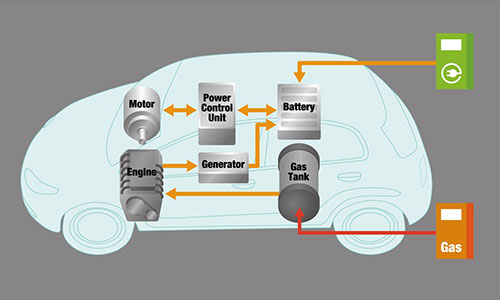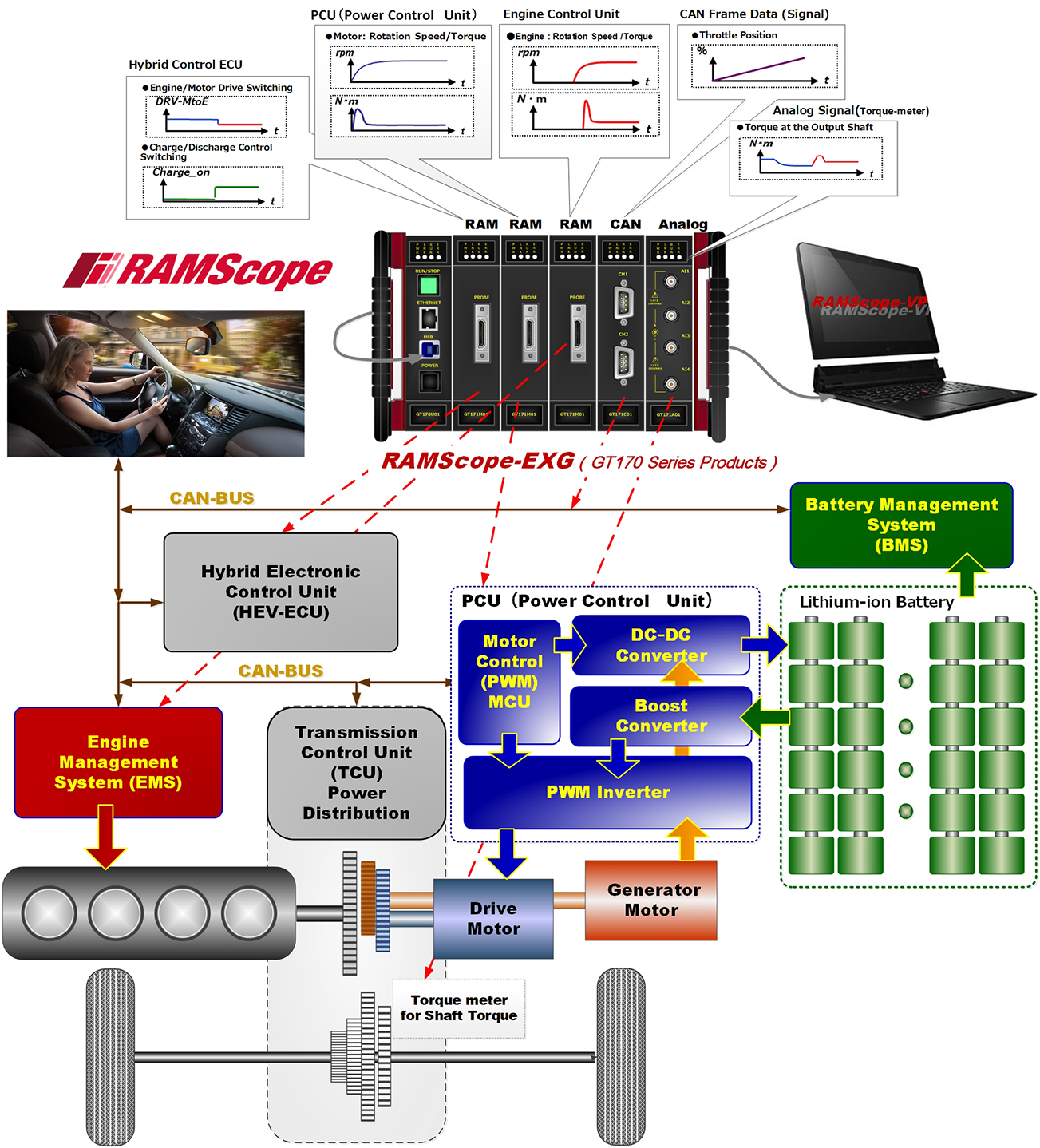Verification of Multi-ECU Cooperative Control of HEV Systems
Synchronised measurement of the co-operative behaviour of multiple ECUs is possible!
Simultaneous measurement of control variables of four MCUs with different control cycles
(RAMScope was born from applicable achievements in HEV management systems and the measurement needs of HEVs)


The diagram above shows an image of a multi-ECU measurement case study where the co-operative operation of an HEV system was verified.
In recent automotive controls, co-ordinated control of multiple ECUs, such as Start-Stop System, is increasing.Depending on the state of the car, the respective ECUs work in concert to ‘run’, ‘turn’, ‘stop’ and ‘heat/cool’ the car.RAMScope has experience in synchronous measurement of internal variables for multiple ECUs in cooperative operation.Four control MCUs with different control cycles are probing by RAM measurement modules for each MCU and synchronous measurement is carried out.
In HEV control, power is split: motor power is used for low-speed rotation and high torque, and engine power is used for high-speed rotation and low torque.In HEV control, power is split between motor power for high-torque power at low speeds and engine power for low-torque power at high speeds.
The timing in the figure above measures a series of ECU-coordinated operations that assist from motor power to engine power.In power splitting, the number of rotations and torque are adjusted electrically, and an example of analog measurement of torque change during this switching is introduced.In HEV systems, control that minimizes torque loss caused by frequent power switching leads to improved fuel and electricity efficiency.
RAMScope can measure the behavior of a coordinated system by synchronizing the control operations of each ECU.Please use for example to minimise time lags in ECU co-ordinated operation.
